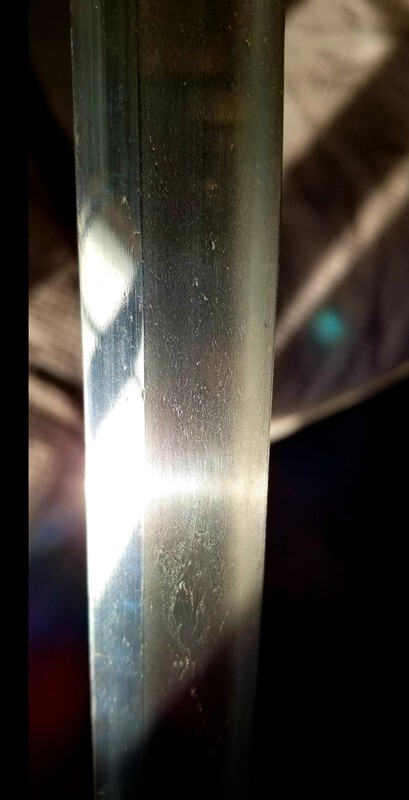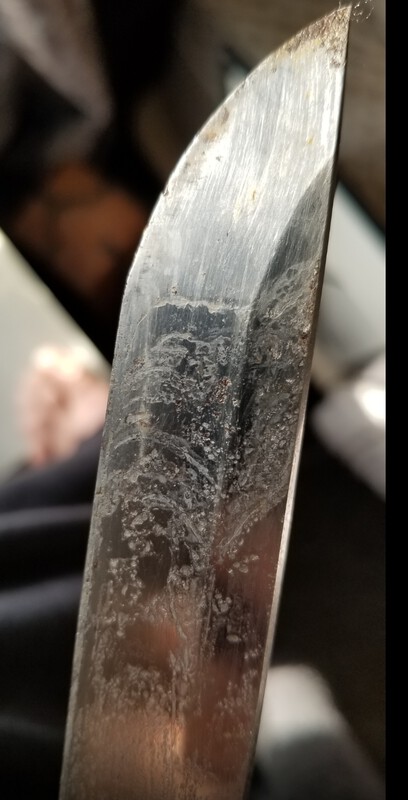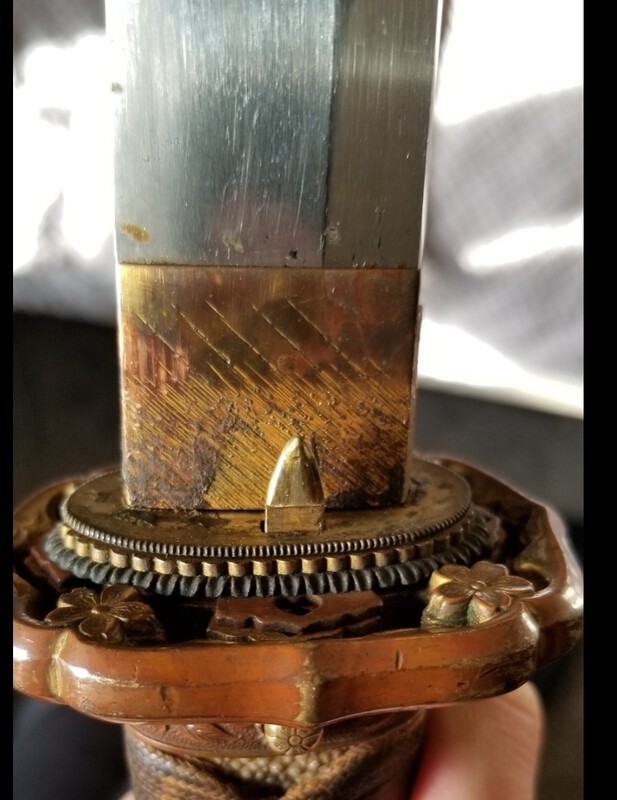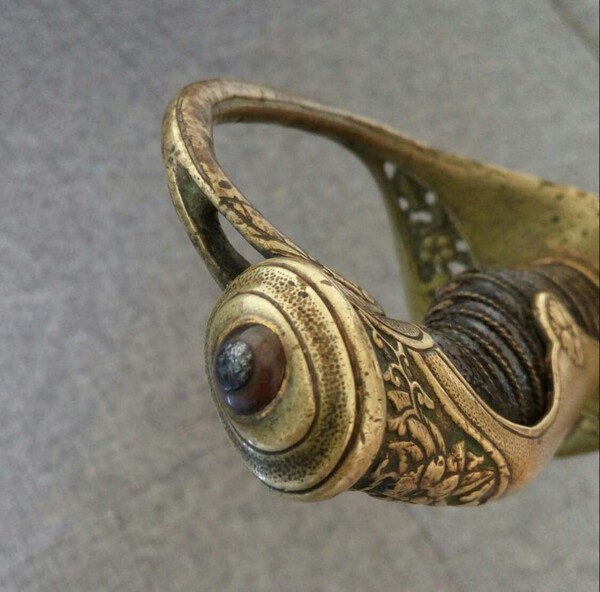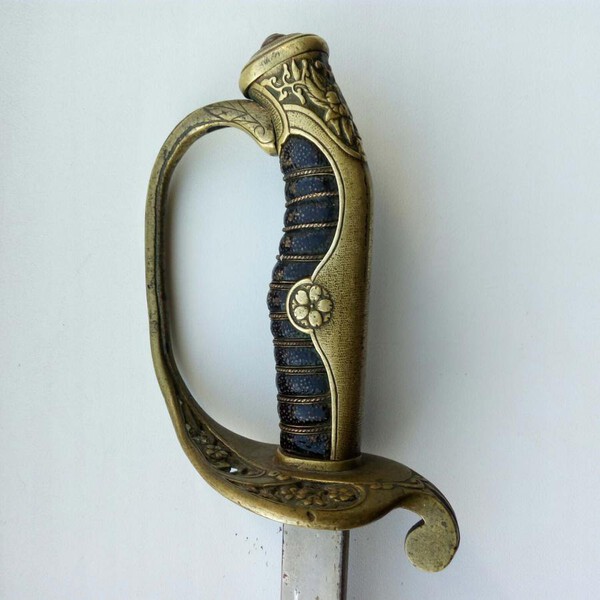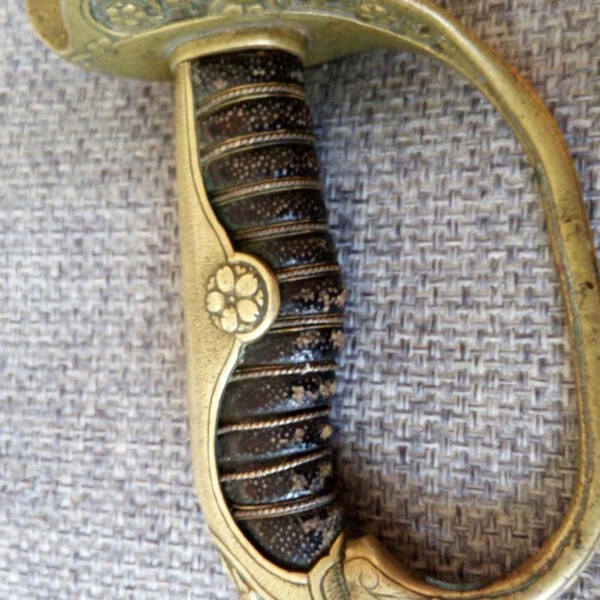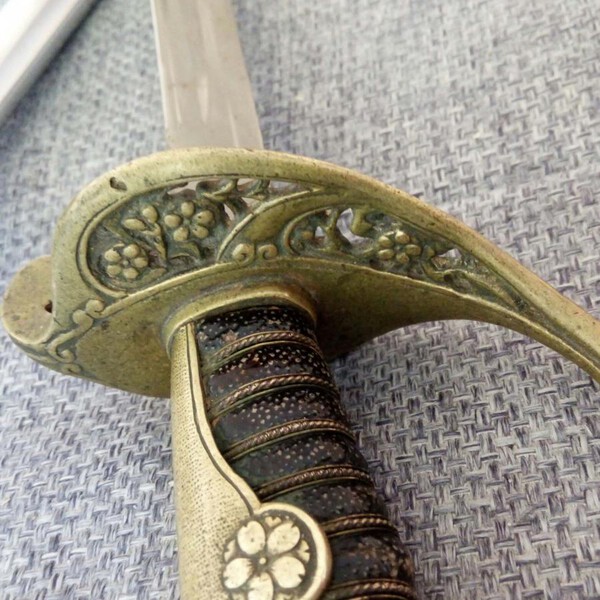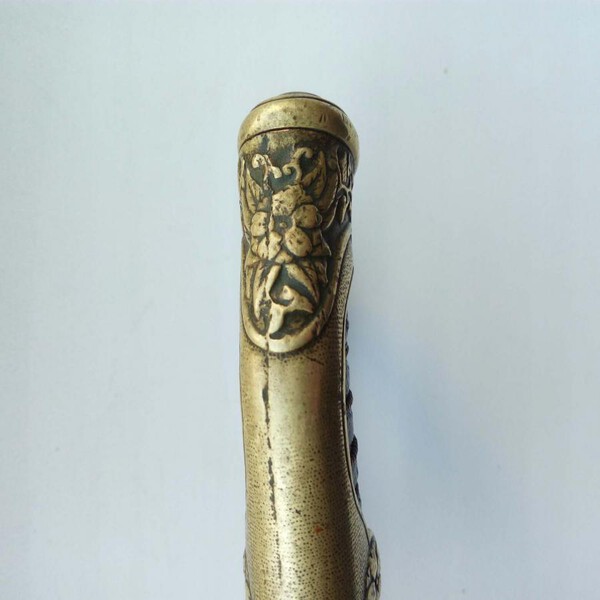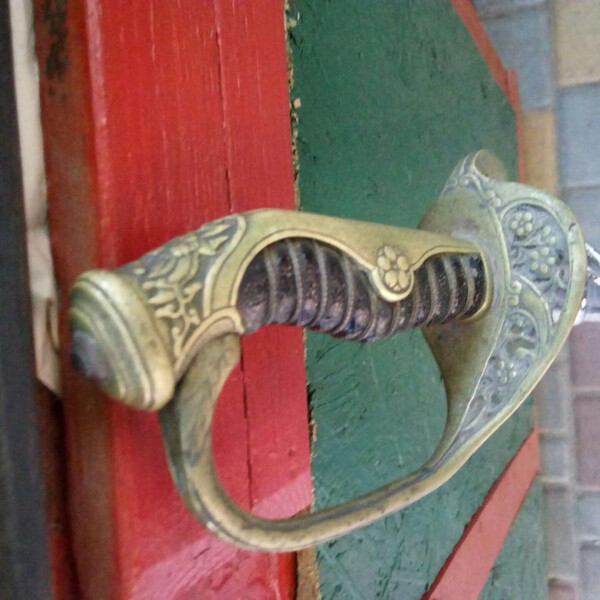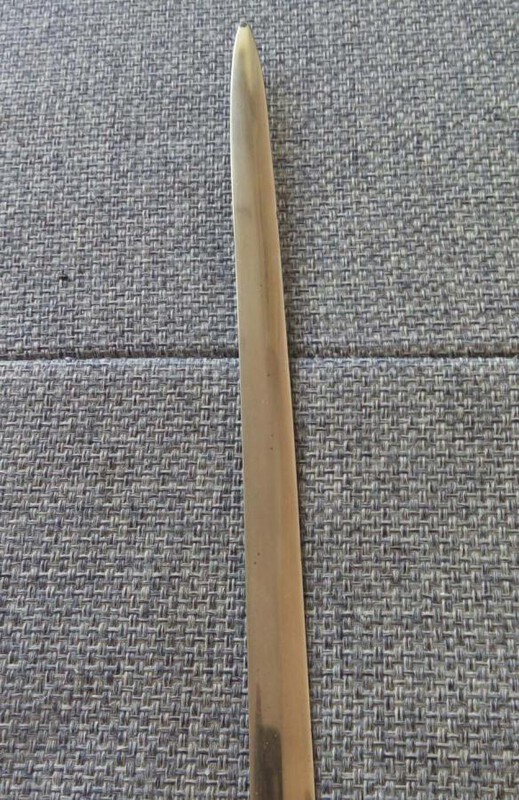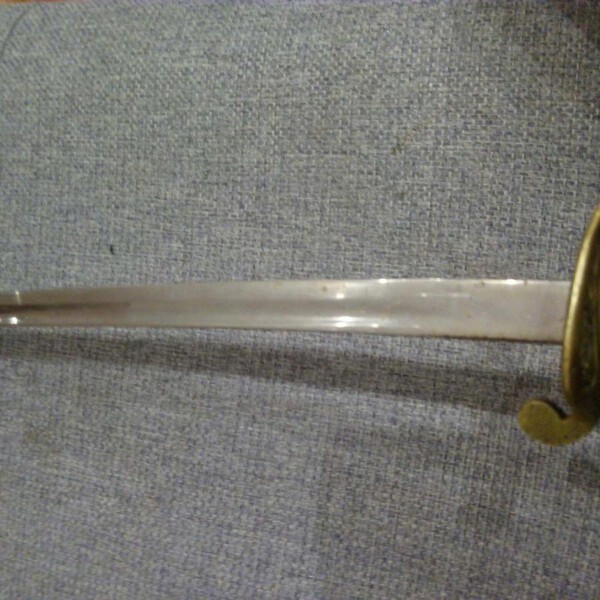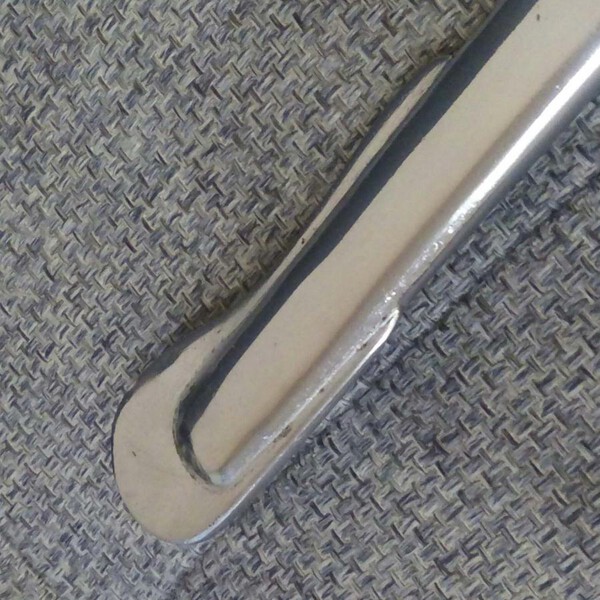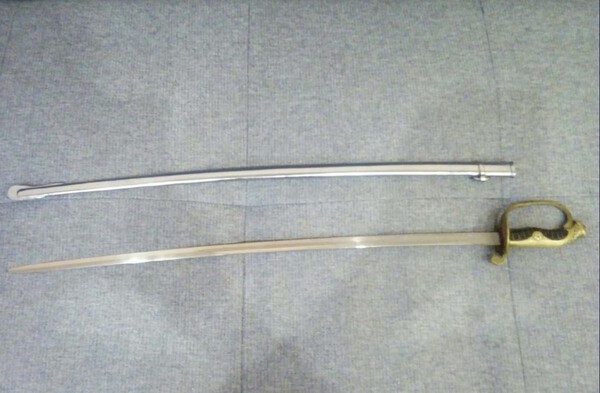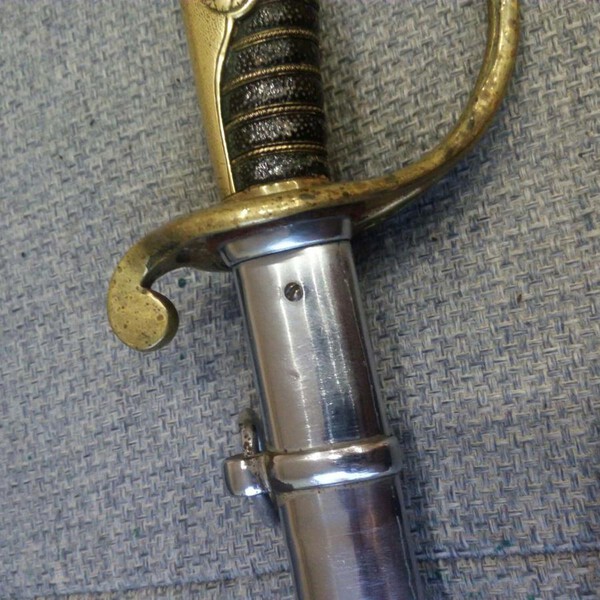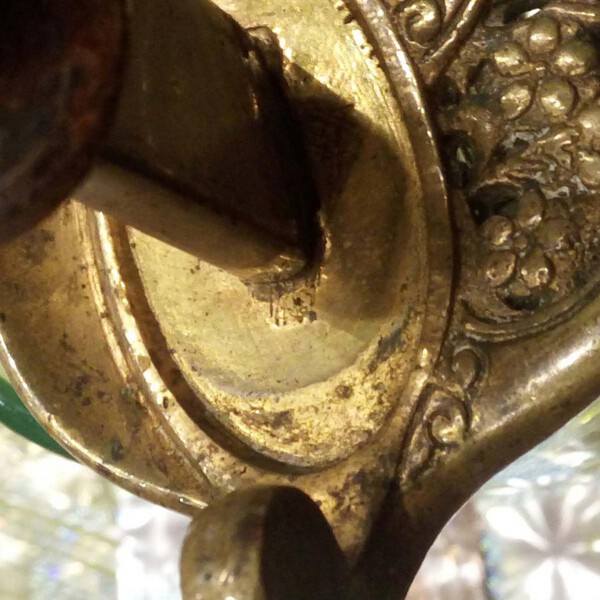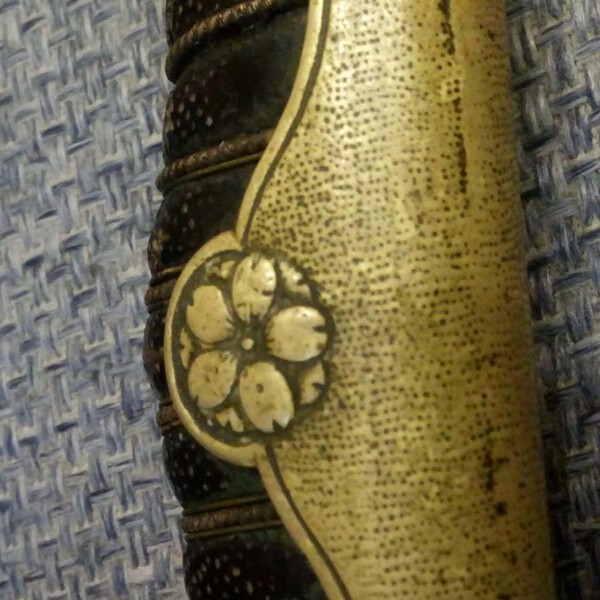-
Posts
13,004 -
Joined
-
Last visited
-
Days Won
155
Content Type
Profiles
Forums
Events
Store
Downloads
Gallery
Everything posted by Bruce Pennington
-

Attention Mantetsu Owners: A Survey
Bruce Pennington replied to Bruce Pennington's topic in Military Swords of Japan
Jean & Stegel - It is truly a joy to be a part of this great group of friends, thank you for your kind words. And I, too, consider everyone here my friend. There have been some fascinating discoveries made (on more threads than this one!), some new, and some just catching up with Ohmura-san who has been right on many things. We are just finding verification of some of his ideas. I'm growing more impressed every day with our Thomas! He is turning out to be NMB's version of Nick Komiya at Warrelics! Oh, and Stegel has pointed out a failure on my part to transfer some updates - Nick Komiya on the Mantetsu thread at Warrelics has made a clarification of the late-war mei "満鉄鍛造之 (Mantetsu Tanzo Kore)" The Mantetsu contraction singularly stands for SMR. Many older threads have mistranslated this phrase to "Made from Manchurain steel" or "Made from Mantetsu steel" or "Made the Mantetsu way." It is simply "Mantetsu forged this." -

Attention Mantetsu Owners: A Survey
Bruce Pennington replied to Bruce Pennington's topic in Military Swords of Japan
Thomas, Still catching up with you - "Dairen Tetsudō Kōjō Dairen Railway Workshop The full name being 南満洲鉄道株式会社大連鉄道工場刀剣製作所." Where does this come from? Is it a seperate business from SMR? Who is this? -

Attention Mantetsu Owners: A Survey
Bruce Pennington replied to Bruce Pennington's topic in Military Swords of Japan
Ok. I’m getting it. Just as Nagoya had 17 factories making blades under their supervision. SMR’s numbers would be included with any and all other factories making blades for Nanman. -

Attention Mantetsu Owners: A Survey
Bruce Pennington replied to Bruce Pennington's topic in Military Swords of Japan
[pulling out hair!!!] AAAAHHHHHHH!!!!!! THOMAS ... ok, I'll calm down .... [breathing deaply ... not helping] I just got a chance to look at the chart and the translation you've given (which I completely agree with) and, correct me if I'm wrong, but this is saying NANMAN ARSENAL, not SMR Dalian, is the one the chart is showing tasked with supplying/transfering 5,500 unfinished blades (KOA ISSHIN BLADES) to Tokyo and producing 500 Koa Isshin blades. Is that what I'm seeing?!?!? Additioinal request - after looking at the lines at the top of the untranslated part of the chart, it appears to be showing production numbers for other arsenals? I see the NA of Nagoya. I think a lot of people would enjoy knowing who these other are, and seeing the amazing numbers they were cranking out. -
Thomas, my Toyokawa anchor is 5.37 mm. If you include the circle it’s 6mm.
-

Attention Mantetsu Owners: A Survey
Bruce Pennington replied to Bruce Pennington's topic in Military Swords of Japan
So, that proves that Nanman was making blades! I still haven’t had enough time to sit down and digest the translation you gave on the Koa chart. -
The size and style of the seppa (spacers on either side of the tsuba) and the cat-scratch patterned habaki indicate the owner spent extra money to fit this blade out in quality fittings. The guys are saying not to make an effort to remove the rust marks from the blade because the process will often damage the fancy temper pattern (many technical terms for this, but often simply refered to as "hamon"). If this turns out to be something you want to have professionally pollished, you'd regret causing harm at this stage.
-
Well said, Austus.
-

Attention Mantetsu Owners: A Survey
Bruce Pennington replied to Bruce Pennington's topic in Military Swords of Japan
I mean contraction. Man - tetsu is the first and last kanji of the SMR name. I don't remember where I read that, maybe Ohmura. Why? Is the "Dairen Railway Workshop" a contractor? -

Attention Mantetsu Owners: A Survey
Bruce Pennington replied to Bruce Pennington's topic in Military Swords of Japan
That’s interesting Thomas. Mantetsu itself is a contraction, so there already is an established practice of using contractions. If true though, it really messes with the idea these Ren stamped blades were made at the Nanman arsenal. -
-
Austus, Here's where I brought the old blade, mounted in Kaigunto fittings, to the forum for evaluation: http://www.militaria.co.za/nmb/topic/20630-kai-gunto-with-koto-blade/ It was early in my collecting days, and I was looking for my first kaigunto. A dealer was selling this one for TWICE the price of a normal kai. All the gold gilding was gone and the saya showed considerable wear and delapidation. So and asked why the price? 1. The sharskin saya, 2. The Fujiwara mon, and 3. the old blade. I got interetsted and bought it. After all these years of learning, I realized I still paid too much, but I'm glad I have it. The blade is mumei and was likely made during a period of much warring, so it was probably as mass-produced as blades could be back then. I'm still honored to have a blade that went through that much time, and possibly battle, and still be here today.
-

Attention Mantetsu Owners: A Survey
Bruce Pennington replied to Bruce Pennington's topic in Military Swords of Japan
It’s certainly just as possible as it is for Nanman to have been manufacturing them. But we already have a document ordering 5,500 unfinished blades to make up for Tokyo’s shortfall. Still not out of the question though. -
Austus, Yes, I have an old blade that tapers from the nakago ana all the way down to the kissaki. Can't get the habaki off either. Mine is likely between 1400 and 1600 on the year. That's as close as I was able to narrow it down.
-

Seki Blade in Civillian Koshirae
Bruce Pennington replied to vajo's topic in Military Swords of Japan
Great find, Chris! Looks pretty old to me by the sight of that nakago. -
The nakago looks really thick! Or is it just camera angles? The second mekugi ana is quite common for older blades pressed into service for the war. The one closer to the habaki is usually the one fitting the military tsukas.
-

thesamuraimonkey42
Bruce Pennington replied to Brian's topic in Auctions and Online Sales or Sellers
Sad. -
"Worth polishing" is something that depends on you. If you're planning to sell, then, yes the cost may put your expenses higher than market value. If you're keeping it, then the decision is really based on your taste. Some folks love the aged look while others want to bring out the full beauty of the blade. Just depends.
-
Thanks Omar, that made my day! I ran into one of these guys when I tried selling a Rinji (Type 3) gunto on Craigslist. He asked me to hold the sword while he sent his team to pick it up. He would send me a check for the full amount, plus $900 extra. The extra was for me to pay his delivery guy! The check arrived, which I promptly took to my bank. The bank has several of these on file as they are all forgeries. I asked how the scam works, since he said he was willing for the check to clear before I mailed the sword. Turns out that the bank sits on the check for approx 9 days while they confirm that the bank & account are real on the other end. At that point, they clear the money to my account (in this case $1,900). After I cash out, and the scammer cancel the delivery guy, the scammer will want me to mail them the $900. After about 3 WEEKS, when the bank at the other end goes through all their checks and realizes the check is a forgery, they notify MY bank of the fraud and then my bank comes to me wanting their money back (or they just take it in shorts, depending upon the bank).
-
Austus, I agree with Steve on the intermingling of the brass-aoi and iron-round tsubas. Fuller has a chart showing this, and blades in-hand verify it. My Tokyo (Kokura) stamped 95, ser # 92605, has the brass tsuba. It was myth, begun by early speculation about the iron tsubas, that they were late-war production. A little more on the stamps, Ron - the "stacked cannonballs" was used by the Kokura Arseanl who oversaw Type 95 production of both the Tokyo 1st and the Nagoya Arsenals up to 1942ish. You'll know which one by the smaller inspection mark, the middle of the 3, and/or the mark on the blade. When the Kokura oversight was cancelled, you'll see Tokyo 1st (star) or Nagoya (circular symbol) in place of the cannonballs. I also wanted to comment on the maker's stamp, commonly called the "Ichi". Steve's idea of it representing the Tokyo 1st Arsenal (because Ichi is Japanese for 1), is one of the ideas about this stamp. But unless Steve has some corroboration for this, I'll posit the other theory - that this comes from the Kobe sword company. The owner's name was 神戸 一幸 or Kobe Ikko. Two of the unknowns, the "K" and the "一", in my mind, are possibly from the same shop. The "K" from "Kobe" was seen on the initial 95s, then the "一" from 一幸 showed up for the latter run. I think it's just too coincidental that the first "letter" of the owner's names, one english the other Japanese, are the unknowns.
-
I'm on a work-trip, so hopefully someone can make some measurements of their anchor stamps for Thomas. I'll measure mine when I get home. In the meantime I'm trying to firm up the dateline on the use of the Showa stamp. From what I read in the Fuller and Ohmura works: Prior to 1939 - Seki Guild used the Seki Stamp 1939 - early 1942 - Seki Guild assigned to use the Showa Stamp; Nagoya Arsenal used Seki Stamp 1942 - 1945 - Arsenals went back to own stamps, smith groups (Seki, Gifu, etc) reclaimed their stamps This seems to fit, but as in "All things Gunto" Ohmura shows a blade, on the very page he lays out this discussion, that has a Showa stamp, yet is dated Oct 12, 1937 (Showa 12).!!! Here again, the exception to the rule. Ohmura's discussion found here: http://ohmura-study.net/211.html
-

Attention Mantetsu Owners: A Survey
Bruce Pennington replied to Bruce Pennington's topic in Military Swords of Japan
I see what you're thinking with this At a certain level, the kabutogane stamped "To" supports the idea that these blades had been sent to Tokyo Arsenal for "finish" work. (posting the pics, in case the linked site goes inactive in the future) -

thesamuraimonkey42
Bruce Pennington replied to Brian's topic in Auctions and Online Sales or Sellers
Can't say I've ever seen one with ridges like that. You should PM Neil (IJASWORDS). He's quite up on koshirae.




